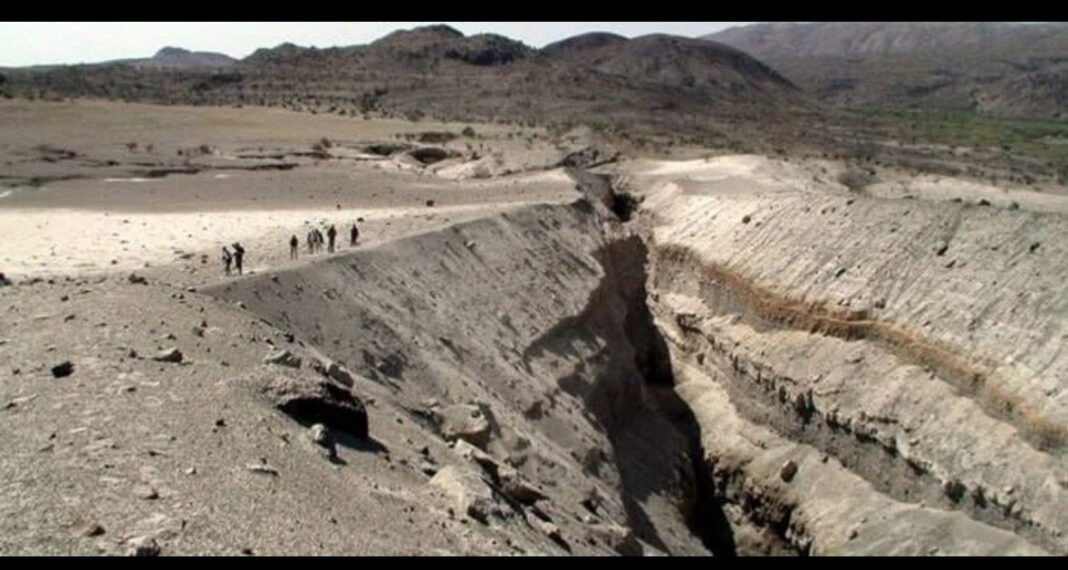ADDIS ABABA, (HAN) — Scientists in Ethiopia have observed a widening crack in the country’s northeastern region, indicating that the African continent is slowly splitting apart. The geological activity in the Afar Depression could eventually lead to the formation of a new ocean and transform parts of East Africa into islands.
The massive fissure, stretching several kilometres across the arid Afar landscape, is part of the Great East African Rift System — a vast network of geological faults extending over 3,000 kilometres from Ethiopia through Kenya and Tanzania to Mozambique.
According to Dr. Tadesse Alemu, a geophysicist at Addis Ababa University, “What we are witnessing is the early stage of continental breakup. The Arabian, Somali, and Nubian tectonic plates are slowly moving away from each other, and over millions of years, this movement could create a new ocean basin.”
The Afar region, one of the hottest and most geologically active areas on Earth, lies at the junction of three tectonic plates: the Arabian Plate to the north, and the Somali and Nubian Plates to the south and west. This continuous pulling apart creates cracks, fissures, and volcanic eruptions, showing how the Earth’s crust is stretching and thinning.
Satellite imagery and ground measurements reveal that the Afar Triangle is splitting apart at a rate of about one to two centimetres per year. Though the movement is slow, scientists say that over millions of years, it could reshape an entire continent.
Dr. Helen Meles, a volcanologist with Ethiopia’s Institute of Geophysics, noted that the Afar Depression serves as a “geological laboratory” where scientists can observe processes that usually occur deep beneath the ocean floor. “This is a place where you can literally stand on the surface and see the Earth’s crust being torn apart,” she said.
If rifting continues, seawater from the Red Sea and the Gulf of Aden is expected to flood the Afar Depression in 5 to 10 million years, creating a new ocean. When that happens, parts of Ethiopia, Eritrea, and Djibouti could separate from mainland Africa and form a chain of islands.
Researchers believe this slow geological transformation could eventually change the region’s environment and economy, creating new marine ecosystems, trade routes, and opportunities for geothermal energy.
Ethiopian scientists, working with international partners, continue to monitor the region through satellite data, GPS, and seismic sensors to track ground deformation and magma movement.
Although the process will take millions of years, scientists say the Afar Rift remains one of the most fascinating natural laboratories on Earth — offering a glimpse into how continents drift and how new oceans are born.





